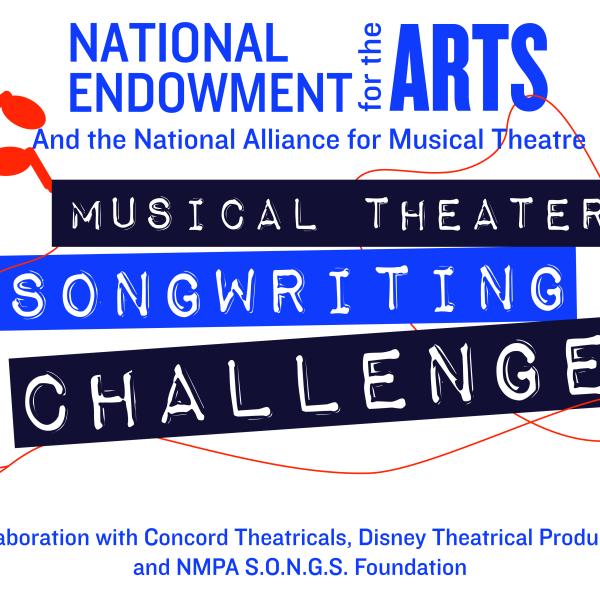New Report Released on the Economic Impact of the Arts and Cultural Sector

Washington, DC—After more than a year enduring the pandemic, the arts and cultural industries remain among the hardest hit by the economic crises inflicted by COVID-19. New data released today by the National Endowment for the Arts and the Bureau of Economic Analysis (BEA) describe the national and state-level contributions of the arts and cultural sector to the nation’s gross domestic product in 2019. These data from the Arts and Cultural Production Satellite Account (ACPSA) show the sector as thriving just before the pandemic struck.
ARTS AND CULTURAL PRODUCTION SATELLITE ACCOUNT DATA FROM 2019
The ACPSA tracks the annual economic impact of arts and cultural production from 35 industries, both commercial and nonprofit. Those 35 industries range from architectural services to sound recording and, in whole or in varying segments, are considered a distinct sector of the nation’s economy.
The data shows that in 2019, economic activity in the sector had been expanding:
- Production of arts and cultural goods and services in the U.S. added 4.3 percent directly to the nation’s GDP, for a total approaching a trillion dollars ($919.7 billion).
- This amount remains greater than the value added by such industries as construction, transportation and warehousing, mining, and agriculture.
- Arts and cultural industries had 5.2 million workers on payroll with total compensation of $447 billion. This figure does not include self-employed arts workers.
Other findings from the ACPSA:
- Over a three-year period (2017-2019), the value added to GDP from arts and cultural production has grown at a three percent clip—slightly higher than the growth rate for the U.S. economy as a whole.
- Leading growth industries include: web publishing and web streaming services (+11.8 percent), fine arts education (+9.8 percent), and landscape architectural services (+ 7.8 percent
- The arts continue to generate a widening trade surplus. From 2006 to 2019, this surplus has grown 10‐fold, to more than $33 billion.
The National Assembly of State Arts Agencies has created state dashboards that allow users to see the value-added by arts and cultural industries to the state’s economy as well as key industries in the arts and cultural sector. The dashboards also show arts employment numbers for each state. In addition, BEA has produced ACPSA fact-sheets for each state. These and other resources, along with a national summary report by the Arts Endowment, are available as an arts data profile.
POSITIONING NEW ACPSA DATA WITH OTHER RESOURCES
In contrast to today’s ACPSA data is a January 2021 report developed by the Federal Emergency Management Agency (FEMA), Argonne National Laboratory, and the Arts Endowment. This report notes that within the arts and culture sector, “Nowhere has the effect been more direct, deep, and immediate than on the performing arts.” Contrasting the FEMA report’s unemployment numbers from the third quarter of 2020 with the ACPSA data from 2019 yields the following picture of the performing arts.
• Musicians: In 2019, the unemployment rate was 1.1 percent representing 3,000 professionals. In the third quarter of 2020, the rate rose to 27.1 percent and 56,000 professionals.
• Actors: In 2019, the unemployment rate was 24.7 percent representing 11,000 professionals. In the third quarter of 2020, the rate rose to 52.3 percent and 28,000 professionals.
• Dancers and choreographers: In 2019, the unemployment rate was 10.7 percent or 3,000 professionals. In the third quarter of 2020, the rate rose to 54.6 percent and 8,000 professionals.
According to the Arts Endowment’s Artists and Other Cultural Workers: A Statistical Portrait published in 2017, artists are 3.6 times as likely as other workers to be self-employed, approximately 34 percent of all artists compared with nine percent of all workers.
BUILDING THE ROAD TO RECOVERY
With its data description of the arts and cultural landscape pre-pandemic, the ACPSA provides a destination towards which the arts community can drive its work building the road to recovery. The Arts Endowment is and will be facilitating that journey through funding and sharing insights and stories with the field. For example:
Funding
- Developing guidelines for distribution of $135 million through the American Rescue Plan.
- Granting waivers to grantees to change certain grants from project-based support to general operating support so that organizations can focus on building back their capacities. This applies to fiscal years 2019-2021.
Sharing insights and stories
- The first in a series of webinars about the art of reopening. A Virtual Conversation on Reengaging Arts Audiences in Physical Spaces was held on March 23 that featured special guest Dr. Anthony S. Fauci.
- The Art of Reopening: A Guide to Current Practices Among Arts Organizations During COVID-19
- NEA’s American Artscape magazine’s issue "The Arts in the Time of COVID"
About the National Endowment for the Arts
Established by Congress in 1965, the National Endowment for the Arts is the independent federal agency whose funding and support gives Americans the opportunity to participate in the arts, exercise their imaginations, and develop their creative capacities. Through partnerships with state arts agencies, local leaders, other federal agencies, and the philanthropic sector, the Arts Endowment supports arts learning, affirms and celebrates America’s rich and diverse cultural heritage, and extends its work to promote equal access to the arts in every community across America. Visit arts.gov to learn more.
Contact
Victoria Hutter, hutterv@arts.gov




